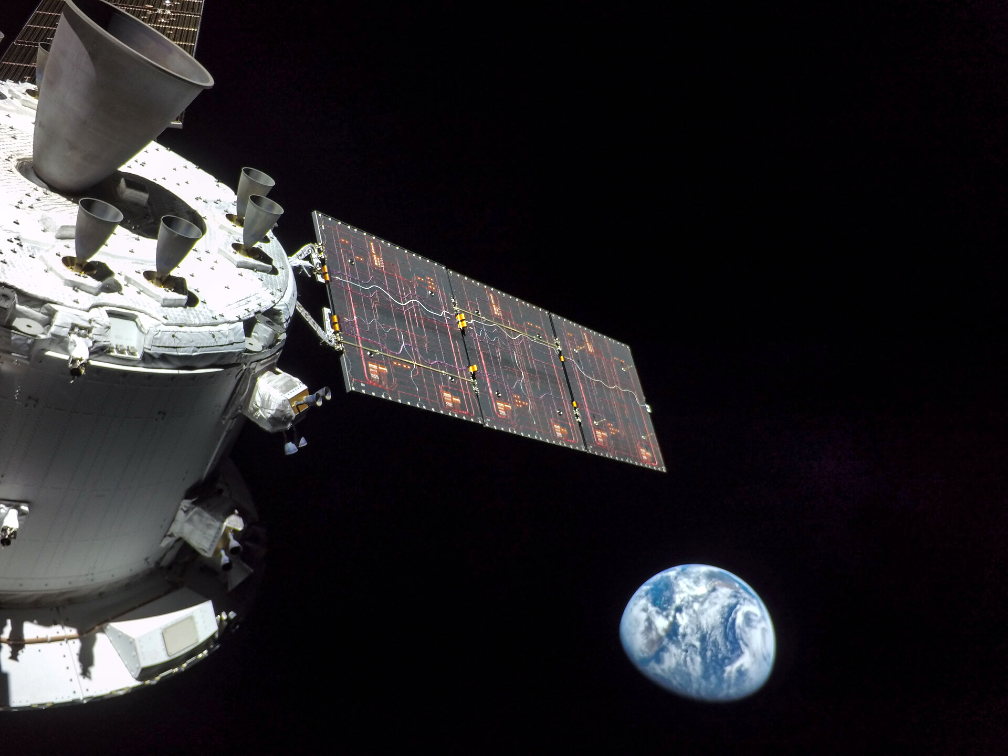
NASA’s Artemis I mission came to a successful conclusion on December 11th with the splashdown and recovery of the Orion spacecraft — this mission was an uncrewed, integrated flight test of the hardware and technology that will take humans back to the Moon for the first time in more than five decades.
The Space Launch System (SLS) rocket, Orion spacecraft and Exploration Ground Systems (EGS) at NASA’s Kennedy Space Center in Florida performed flawlessly during the Artemis I launch on November 16th. During a nearly 26 day mission, Orion traveled more than 1.4 million miles on a path that took it around and beyond the Moon before returning to Earth. The flight testing and data from the mission will inform future Artemis missions.

As the foundational elements of NASA’s deep space exploration architecture, Orion is the safest human spacecraft ever developed, and the launch and ground systems were designed to deliver greater mass and volume with more Earth-orbit departure energy than any existing system. With planned upgrades, the architectures will be able to support future missions to destinations beyond the Moon, including Mars.
The next step in NASA’s Artemis program is launching the first crewed flight to the Moon and back on the Artemis II mission. All elements for that mission are deep into assembly. Work on Artemis III, which aims to put the first woman and person of color on the Moon, is well under way with many of the systems, such as the propulsion for SLS and Orion, nearly complete.
The Artemis program constitutes an important national capability that leverages more than 3,800 suppliers and 60,000 workers across all 50 states. The program sustains an essential industrial base of large, mid-size and small companies that provide high-tech, professional jobs across the country.
Industry partners – Aerojet Rocketdyne, Boeing, Jacobs, Lockheed Martin and Northrop Grumman – applaud NASA and their suppliers across the nation for the successful once-in-a-generation accomplishment of launching SLS and Orion as humanity looks toward exploring deep space as humans have never previously accomplished.
- Aerojet Rocketdyne provided the 39 propulsive elements to the mission, including the RS-25 and RL10 engines affixed to the core and upper stage that carried the SLS and Orion into orbit, as well as the jettison motor for the Orion spacecraft’s Launch Abort System (LAS).
- Boeing is the prime contractor for the design, development, test and production of the launch vehicle core stage and upper stages as well as the development of the flight avionics suite.
- Jacobs was responsible for the rocket’s final assembly, integration, testing, launch and recovery operations support, including development of the Artemis ground and launch control software used in the NASA Launch Control Center at Kennedy Space Center.
- Lockheed Martin is the prime contractor for the Orion spacecraft, including the LAS, crew module and crew module adaptor.
- Northrop Grumman contributed the twin solid rocket boosters that supplied more than 75% of the thrust at launch, as well as the abort motor and attitude control motor for the LAS.
Update 5 posting…
Orion exited the lunar sphere of gravitational influence on Tuesday, December 6, at 1:29 a.m. CST, for the last time on the Artemis I mission — less than a day after completing the return powered flyby burn that put the spacecraft on course for splashdown on Sunday, December 11 — Earth’s force of gravity is now the primary gravitational force acting on the spacecraft.
Orion successfully performed the fourth return trajectory correction burn at 4:43 a.m. using the reaction control system thrusters. The burn lasted 5.7 seconds and changed the velocity of the spacecraft by 0.6 feet per second.
Flight controllers used Orion’s cameras to inspect the crew module thermal protection system and European Service Module, the second of three planned external spacecraft inspections. Teams conducted this survey early in the mission to provide detailed images of the spacecraft’s external surfaces after it had flown through the portion of Earth’s orbit containing the majority of space debris, and teams reported no concerns after reviewing the imagery. This second inspection during the return phase is being used to assess the overall condition of the spacecraft several days before re-entry.
During both inspections, the Integrated Communications Officer, or INCO, commanded cameras on the four solar array wings to take a series of still images. Engineers and flight controllers at NASA’s Johnson Space Center in Houston will review the imagery over the coming days. A final photographic survey will be conducted Friday as Orion continues its journey home.
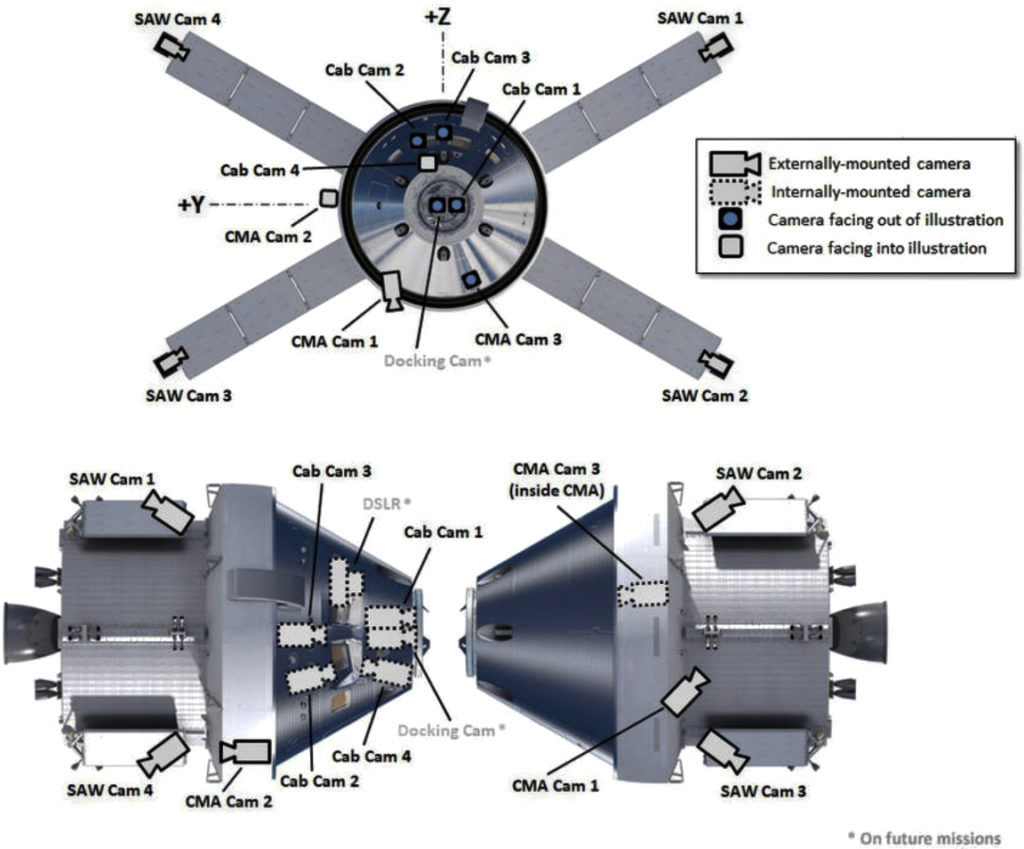
Teams responsible for recovering Orion after its splashdown are continuing preparations ahead of the Dec. 11 splashdown off the coast of California. The mission management team will determine the landing site location Thursday, December 8. Listen to NASA’s Artemis I recovery director, Melissa Jones, talk about what it takes to fetch the Orion spacecraft from the Pacific Ocean at the end of the mission on “Houston We Have a Podcast.”
Just after 5:30 p.m. on December 6th, Orion was traveling 244,000 miles from Earth and about 79,000 miles from the Moon, cruising at 500 miles per hour.
Images are sent down to Earth, and uploaded to NASA’s Johnson Space Center Flickr account and Image and Video Library. When bandwidth allows, views of the mission will be available in real-time via video stream.
UPDATE 4 posting…
On November 16th, the Orion spacecraft took off on its first voyage around the Moon powered by the European Service Module (ESM), designed and built by Airbus engineers, that will supply the astronauts with everything they need to survive in the subsequent crewed missions — from air and water supply to propulsion, energy supply and thermal control.
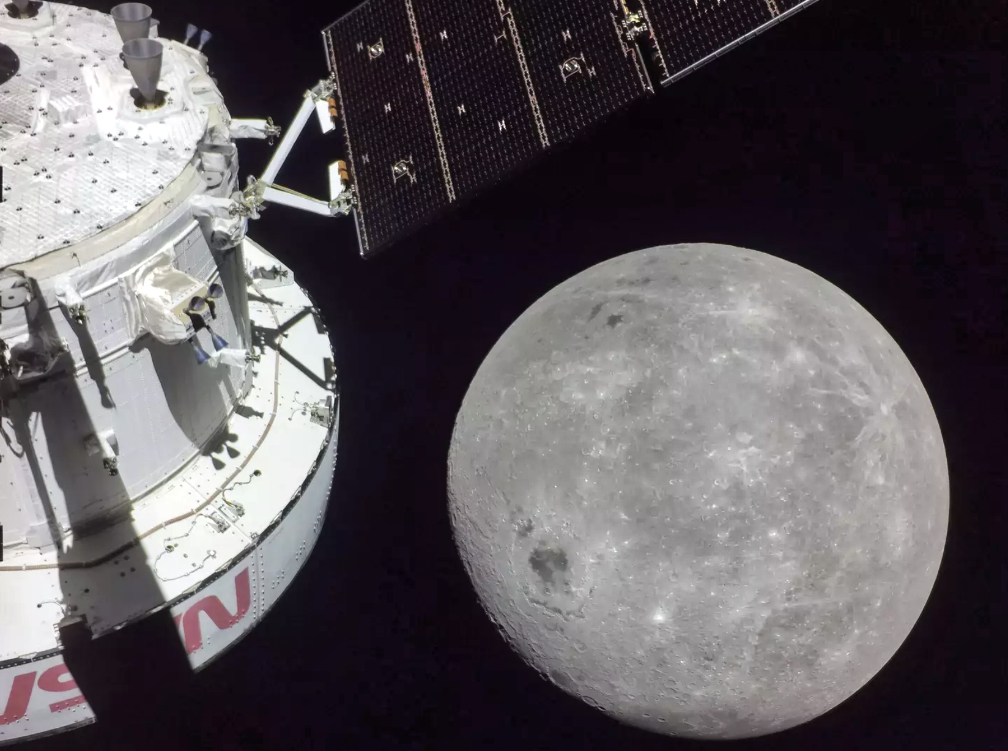
The Orion spacecraft has now reached the halfway point of its journey. The first key moment came just two minutes after launch, when the Orion-ESM propulsion system was activated — this was shortly followed by the successful deployment of the solar panels after just 18 minutes. Two hours into the mission, the upper stage separation burn released the Orion spacecraft and it began to fly autonomously towards the Moon.
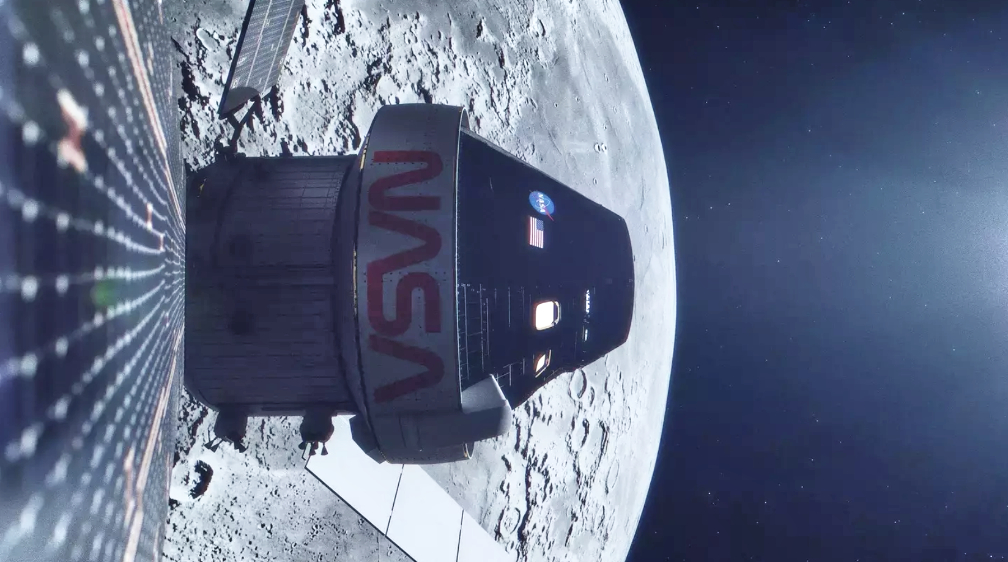
Just under 8 hours into the mission, the Outbound Trajectory Correction Burn (OTC) was carried out. The purpose of this step was to fine-tune the Orion spacecraft onto the correct trajectory as necessary. Before the second OTC, it became apparent that Orion was so well positioned it needed less correction, so that only four, smaller, RCS attitude control thrusters could be used instead of the eight auxiliary thrusters.
From the second to the fourth day of the mission, the Orion spacecraft was already halfway to the Moon. With its solar panels perfectly angled to get as much sunlight as possible for power generation, first evaluations have shown that the spacecraft produces more energy than had been predicted. Minor trajectory corrections were made to keep the Orion spacecraft properly on course.
On the third day of the mission, flight controllers used Orion cameras to examine the crew module’s thermal protection system and the ESM, the first of two planned external assessments of the spacecraft. The second external assessment is planned during the return phase to assess the overall condition of the spacecraft several days before re-entry.
On the sixth day of the mission, the Orion spacecraft had a successful burn of its main engine, the orbit maneuvering system engine, OMS-E. This burn, known as the outbound powered flyby, was the first of four major burns conducted by the ESM to steer the Orion spacecraft into a ‘distant retrograde’ orbit around the Moon and, later, back to Earth. The orbit is ‘distant,’ being at a high altitude from the lunar surface. As Orion travels around the Moon in the opposite direction to that in which the Moon travels around Earth — it is ‘retrograde.’
This main engine burn during a nail biting communications blackout as the spacecraft was in the shadow of the Moon where no radio contact is possible. After approximately 15 minutes, contact with Orion was re-established and the burn confirmed as successful with all the propulsion systems having worked as planned. This first major burn also marked an important milestone in the mission, which saw the Orion spacecraft fly just 130km above the surface of the Moon.
On November 25th, Orion ESM made its 2nd major burn, reaching 430,000km from Earth, beating the previous record of 400,000km held by Apollo 13 in 1970.
For now, Orion will remain in the lunar orbit until Monday, December 5th, to test spacecraft systems before exiting lunar orbit to put the spacecraft on a trajectory back to Earth.
The second half of the Artemis I mission still has many key steps ahead, including when the main OMSE engine completes its longest burn on December 5th, roughly a 3.5-minute firing in the Moon’s shadow, return powered flyby burn (RPF) leaving lunar orbit on the Orion spacecraft’s journey back to Earth, and not forgetting the separation of the crew module from the service module 40 minutes before the splashdown in the Pacific Ocean on at 17:40 (GMT) on December 11th.
“All mission critical milestones in the first half of the Artemis mission were successfully achieved,” said Kai Bergemann, Deputy Head of the Orion Program at Airbus. “Initial evaluation of the test data, has confirmed that the Orion spacecraft consumes much less and produces much more than calculated. This is a very positive finding, meaning that we can already look at design optimisations for the ESM-4 onwards.” Scope for conducting additional tests, not originally envisaged for this test flight, is also currently being explored by the European team to make optimum use of the vehicle, in consultation with NASA. The way things are going at the moment, we couldn’t be happier about how our vehicle is performing and are optimistic that the second half of the mission will also go well.”
Update 3 posting…
On November 11th at 13:44 CET (12:44 GMT), the Artemis spacecraft Orion powered its main thruster on the European Service Module to slingshot around the Moon, just five days after liftoff from NASA’s Kennedy Space Center.
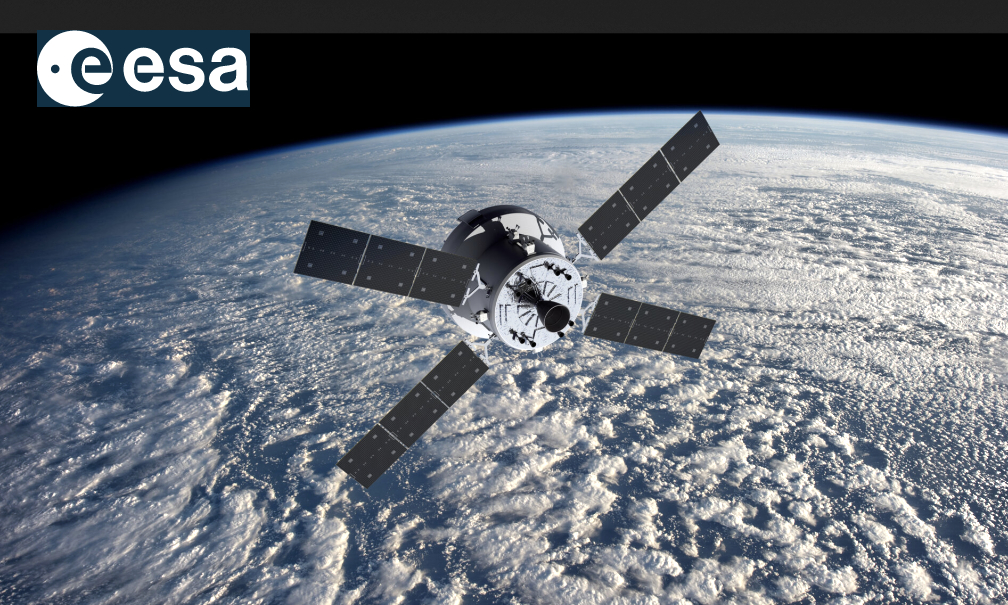
The European Service Module is powering Orion around the Moon and back, providing propulsion, temperature control, electricity as well as storage and delivery for essential supplies such as fuel, water and air.
This first Artemis mission is an uncrewed test mission, putting the spacecraft through its paces preparing to send astronauts forward to the Moon.
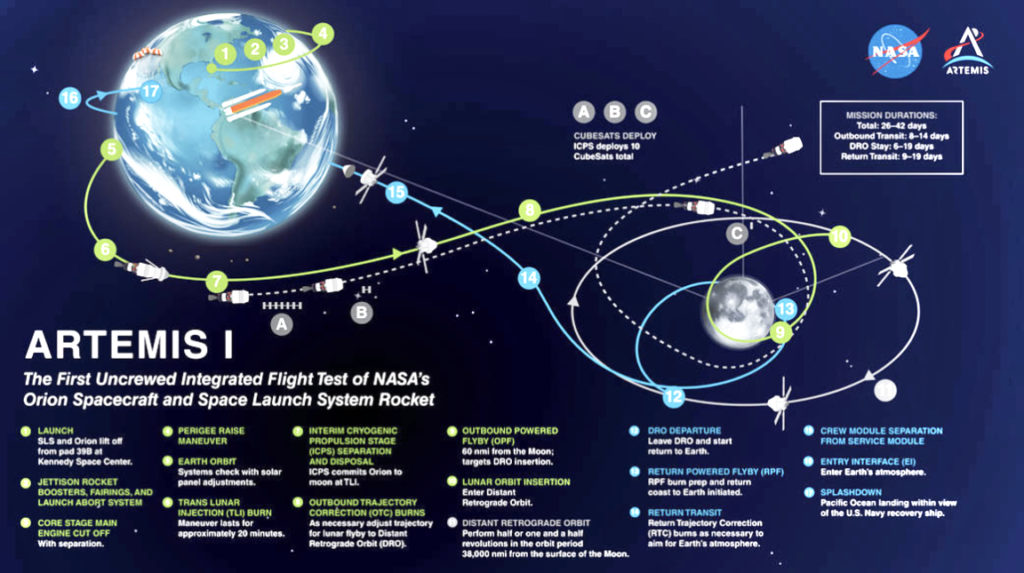
After liftoff at 07:47 CET (06:47 GMT, 01:47 local time) on November 16th, the European Service Module unfolded its 7 meter solar wings to start generating electricity. The Orion spacecraft received a final boost from NASA’s Artemis rocket’s second stage and has been on a five-day cruise to the Moon since then.
This was a key moment for the NASA and ESA teams operating Orion, at just a little more than 130 km from the lunar surface the main engine on the European Service Module – a repurposed Space Shuttle engine that is now on its 20th spaceflight – fired for just under 150 seconds to push the spacecraft and head towards a lunar orbit using the Moon’s gravity to reduce fuel consumption.
Mission control for Orion is at the Johnson Space Center in Houston, USA, with European engineers on hand at all times to offer in-depth expertise on the finer details of the service module. The mission evaluation room based at ESA’s technical heart in The Netherlands has personnel round the clock in direct communication with mission control.
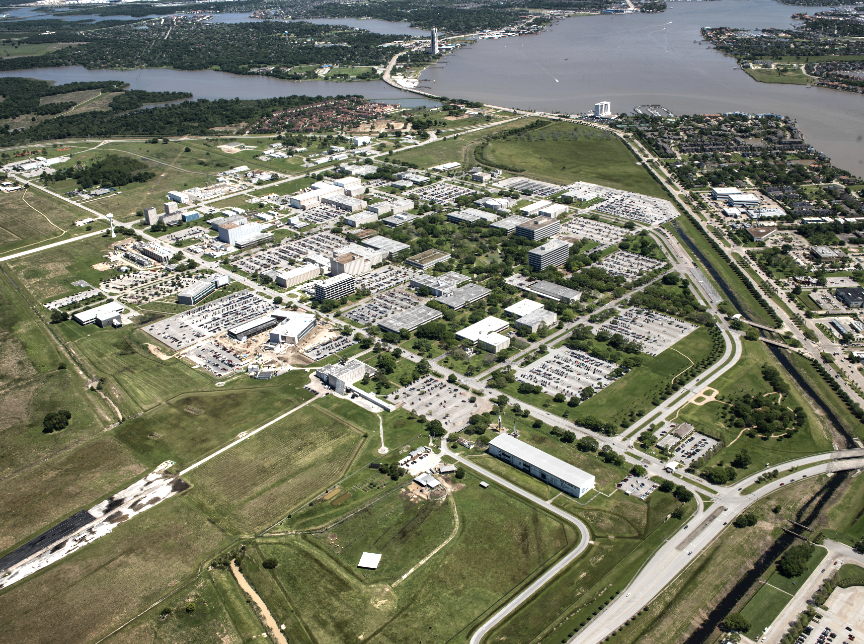

The goal of the Artemis I mission is to stress-test the mission profile, the spacecraft, and the people operating it in preparation for flights with astronauts.
Inside the Orion crew capsule are multiple experiments to prepare for astronaut flights responsibly. These include an ESA investigation recording the radiation doses an astronaut will receive and a German Aerospace Center, DLR, mannequin that is being used to test a radiation vest that astronauts could wear for protection during solar storms.
Orion is now following the Moon’s orbit around Earth and will officially enter lunar orbit on its tenth day of flight, 25 November, when the European Service Module performs the Distant Retrograde Insertion, firing its thrusters to brake Orion and keep flying around the Moon.
The mission is set to end with a splashdown in the Pacific Ocean on 11 December. Visit ESA’s Orion blog for frequent and more detailed updates.
“It has been an absolute joy to follow the mission so far,” said ESA’s Program Manger for the European Service Modules, Philippe Deloo, adding, “all the thousands of components inside have been working together flawlessly as designed, a testament to the international collaboration and prowess of European and US industry. Operationally, the spacecraft is performing perfectly and the international collaboration with this new spacecraft with new flight rules is great to see. The teams across both sides of the Atlantic are showing exemplary skills, knowledge and teamwork leading humankind forward to the Moon.”
Update 2 posting…
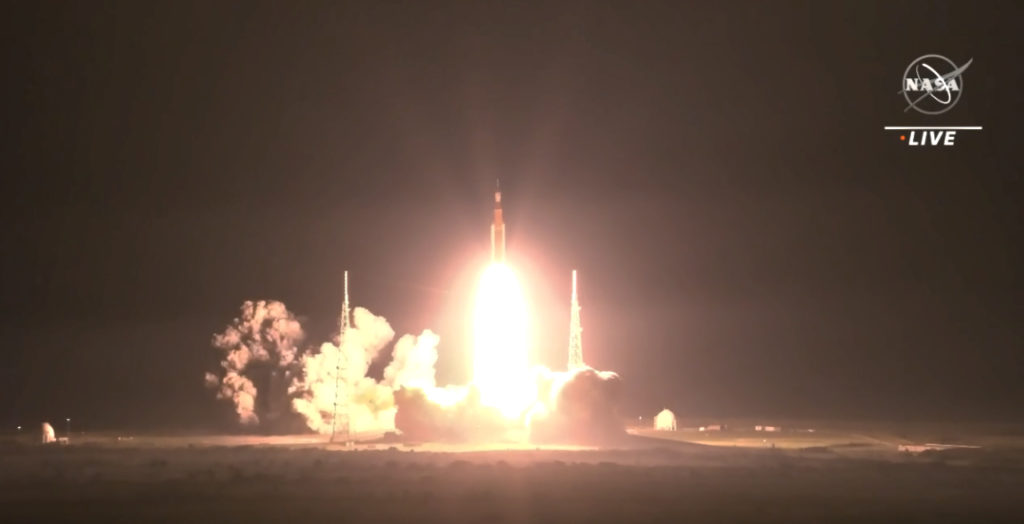
With all of the past launch stutters now water under the bridge, NASA has successfully launched the Artemis I mission from the Kennedy Space Center via the agency’s Space Launch System rocket. With four, RS-25 engines powering the rocket with 8.8 million pounds of thrust, the view of the lift-off from the ground was unimpeded by any weather anomalies.
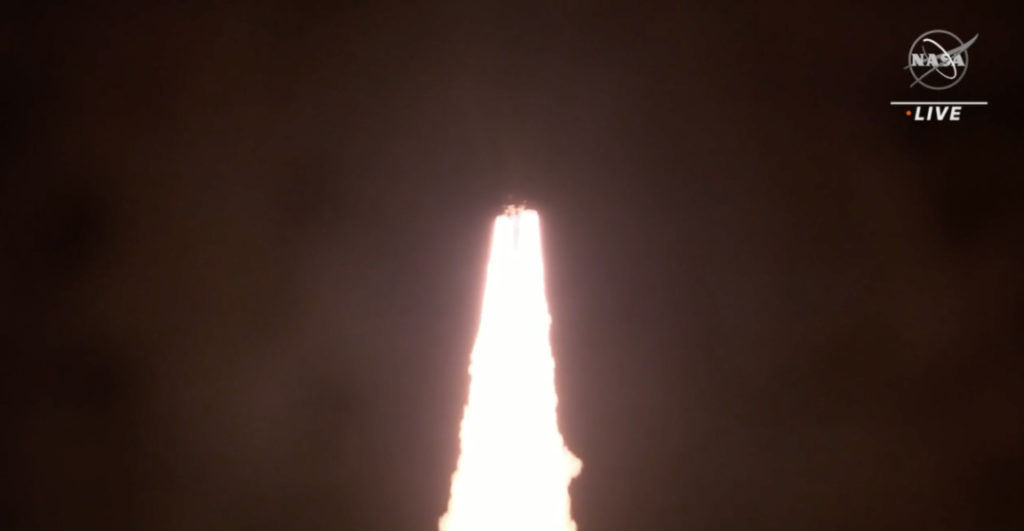
Artemis I is the first integrated flight test of NASA’s SLS rocket, an uncrewed Orion spacecraft and the ground systems at the agency’s Kennedy Space Center in Florida.
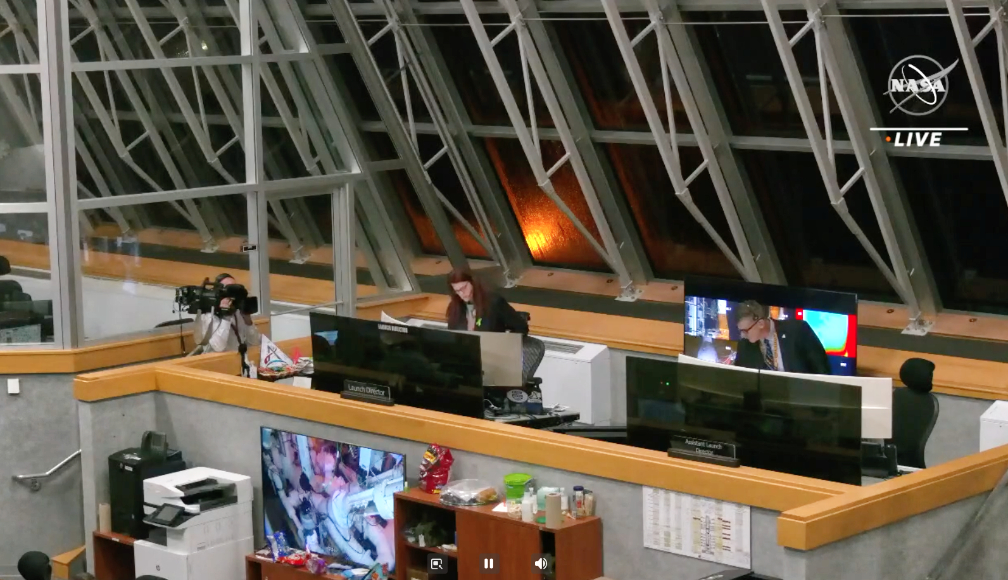
The mission will pave the way for a crewed test flight and future human lunar exploration as part of Artemis.

NASA teams conducted thorough assessments of the rocket, spacecraft, and associated ground systems and confirmed there were no significant impacts that would prevent the launch.
All imagery is courtesy of the NASA live launch simulcast screen captures.
Lockheed Martin’s info release…
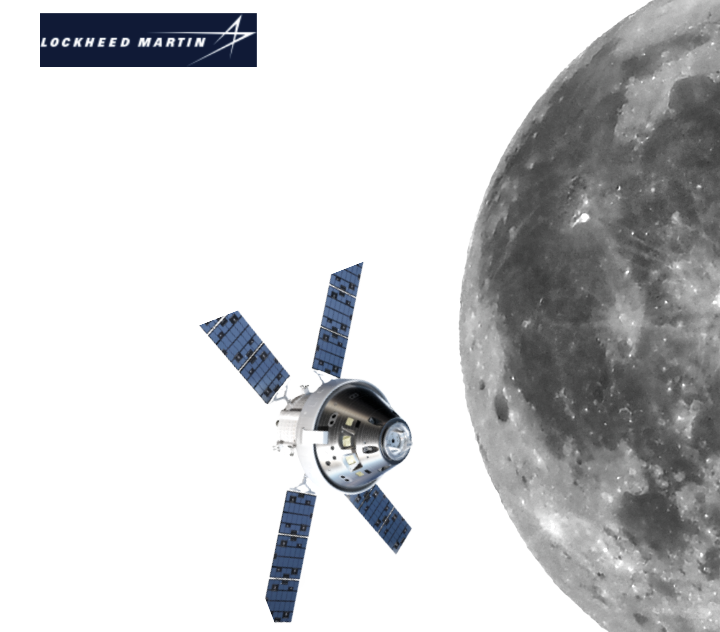
“We’re witnessing history as Artemis I brings us one significant step closer to making NASA’s vision for human deep space exploration a reality,” said Robert Lightfoot, executive vice president of Lockheed Martin Space. “Through a nationwide industry team that has also leveraged an international industrial base, this launch and mission unite the skills of a dedicated workforce and innovative technologies to make a global impact.”
With this successful launch, the planned 25.5-day mission has begun. It will initially take several days to reach the Moon and fly above its surface. Using the Moon’s gravitational force, it will propel into a unique distant retrograde orbit that will take it about 40,000 miles beyond the backside of the Moon. Orion will orbit the Moon and collect data to allow mission controllers to assess the performance of the spacecraft and its payloads.
Preparing for Splashdown
Orion will fly close to the Moon and use a precisely timed engine firing in conjunction with the Moon’s gravity to accelerate back toward Earth – traveling at 25,000 mph as it enters the planet’s atmosphere. The spacecraft will splash down off the coast of San Diego, California.
“Most people today have not lived in a time when a human-rated deep space spacecraft has gone to the Moon or beyond,” said Lisa Callahan, vice president and general manager of Commercial Civil Space at Lockheed Martin Space. “With today’s launch, that statistic has changed and we’re now all members of the Artemis Generation. Personally, I can’t wait to see the first woman walk on the Moon and the spacecraft that will take her there is already in development.”
Launching a Series of Industry-First Demos and Advancements
With a focus on leaning into commercial partnerships and building innovations that will prepare the industry for a future crewed mission, Lockheed Martin has several notables on board for the historic ride:
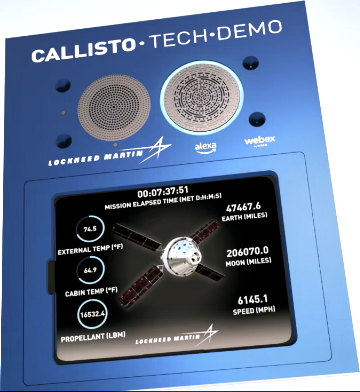
Callisto: Lockheed Martin partnered with Amazon and Cisco to develop Callisto, a technology demonstration payload installed inside and interfacing with Orion during the Artemis I mission. Since Artemis I is uncrewed, Callisto was designed to test and demonstrate how commercial technology could be used to support future crewed missions in space. During the mission, controllers will operate the payload from the Johnson Space Center.
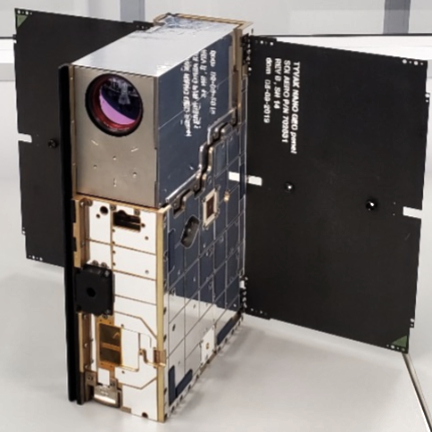
LunIR CubeSat: One of 10 smallsats riding along with Artemis I, the Lockheed Martin-funded LunIR is a technology demonstration which will take images of the Moon to test the company’s ultra-compact, novel infrared sensor that maps the Moon in both day and night. The team will apply learnings from this LunIR endeavor to future lunar and planetary scouting missions to support lower cost, applicable small satellites and technology demonstrations.
AstroRad Vest: The Artemis I mission will also test AstroRad, a radiation-shielding vest developed by StemRad, a partnership between Lockheed Martin and the Israel Space Agency. The vest is made for space travel and is modeled after anti-radiation vests used by first responders on Earth. The MARE experiment put two torsos aboard the spacecraft – one wearing an AstroRad vest and one without to help determine exactly how much protection it will offer astronauts.
